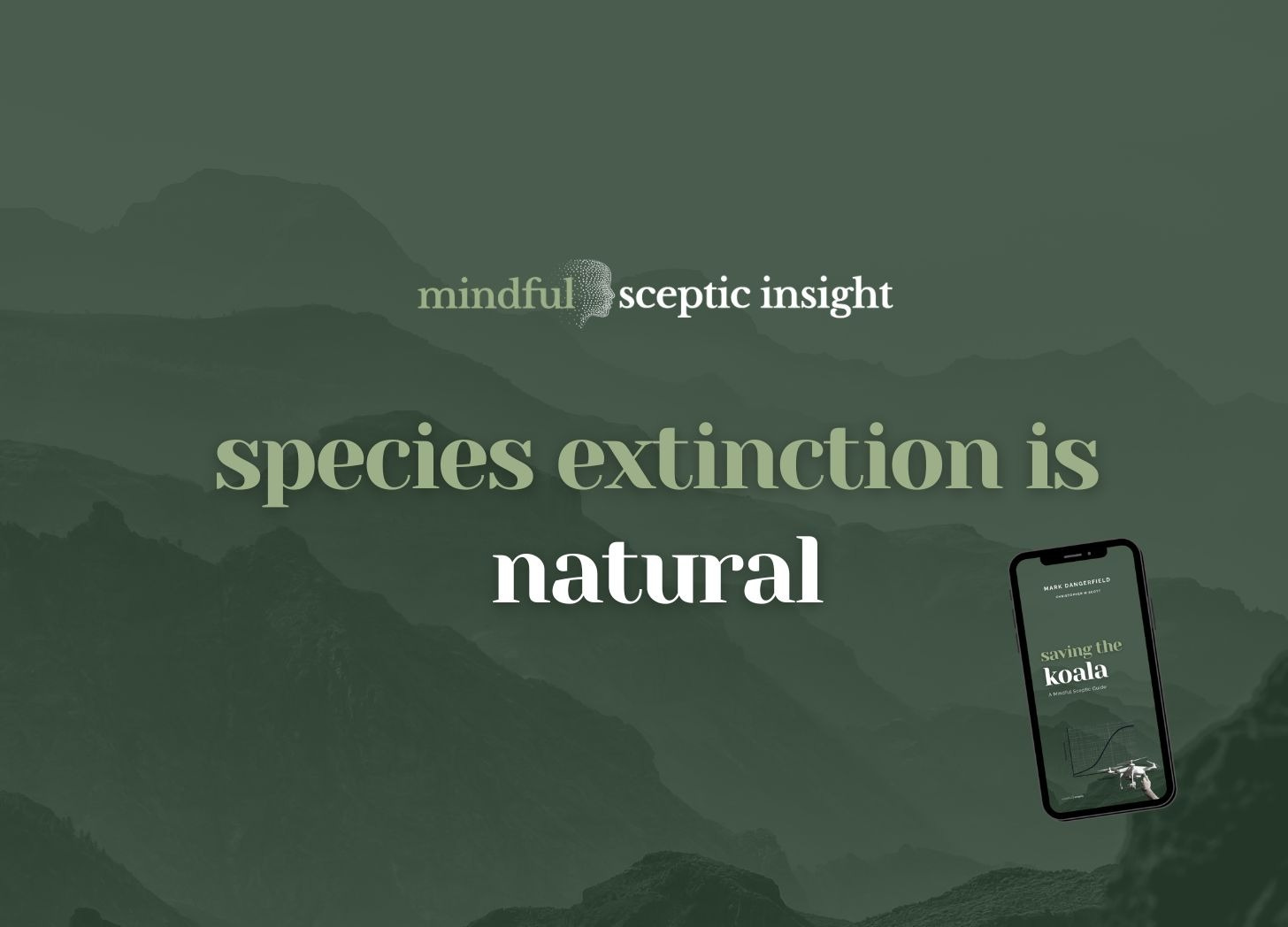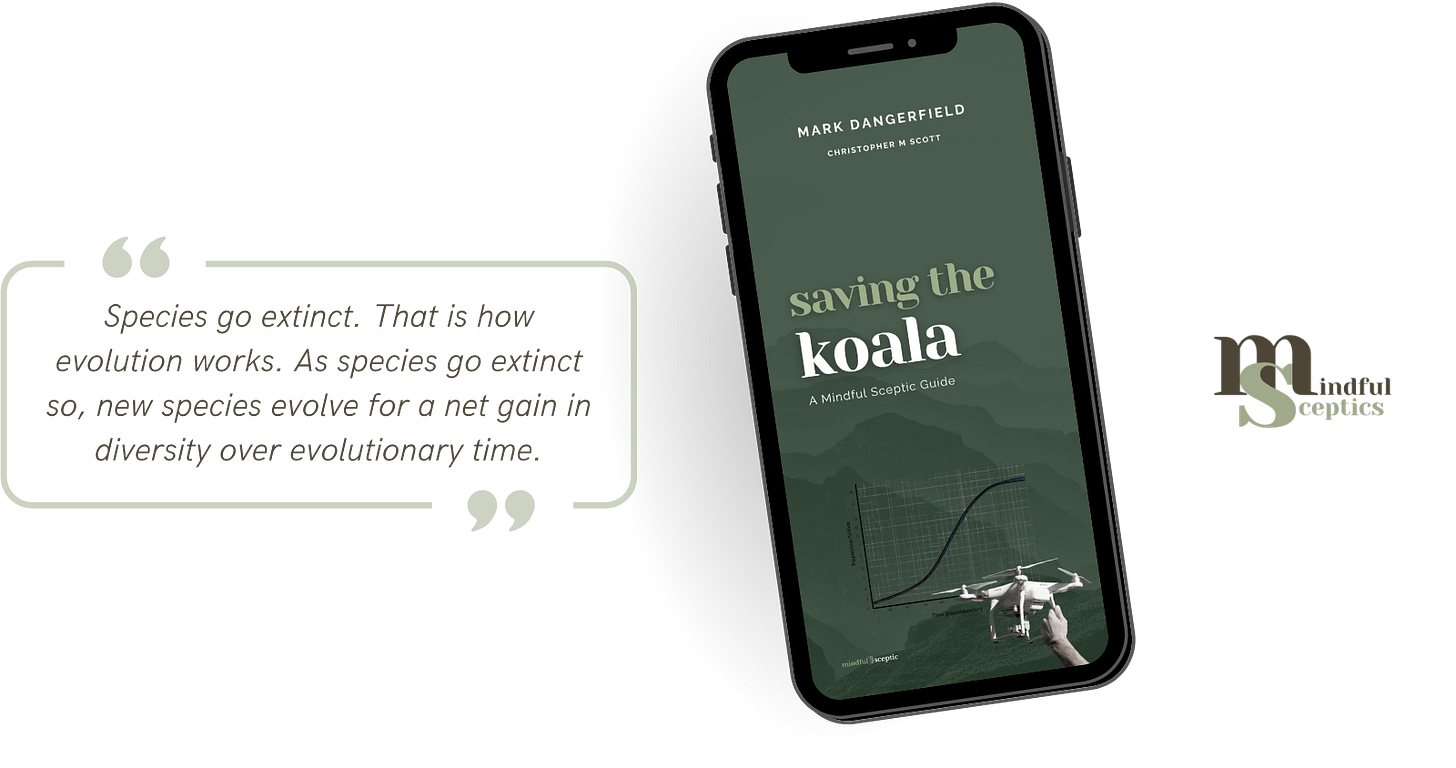Species Extinction Is Natural
We should stop pretending we can freeze a process billions of years old
Core Idea
The conservation movement tells us that preventing extinction is inherently good and necessary for the planet’s survival.
This feels natural to us because extinction looks like failure, like something precious being lost forever.
And there are some acute numbers. The African black rhino has been reduced to 6,700 individuals. The Sumatran tiger is down to 400. The vaquita porpoise, perhaps fewer than 10 are left in the Gulf of California.
These numbers feel like a countdown to catastrophe, a moral emergency demanding immediate action.
But this intuition is horribly misleading.
We’ve confused the tragedy of losing something rare with the necessity of keeping it. Most extinction is not an ecological disaster but evolutionary housekeeping.
Species have been going extinct for 3.8 billion years, and life has responded not with collapse but with ever-greater diversity. The fossil record shows five mass extinctions that each wiped out 60-95% of species, yet each was followed by explosive diversification.
The uncomfortable truth is that most species, especially the rare ones we rush to save, are passengers on the ecosystem ship who come and go, not crew members keeping it afloat.
Counterpoint
Rare species are not ecological linchpins. Common species are.
The standard conservation story promises ecological necessity wrapped in moral clarity: save the tiger and you save the jungle, protect the polar bear and you protect the Arctic, rescue the koala and you rescue the forest. This umbrella species logic suggests that by focusing conservation efforts on charismatic, endangered species, we simultaneously protect entire ecosystems.
But ecosystems don’t work this way. They run on common species doing unglamorous work. The forest persists because soil fungi cycle nutrients, because countless insects pollinate plants, and because decomposer bacteria break down organic matter.
Remove every critically endangered mammal from a landscape tomorrow, and the fundamental ecological processes continue. Remove the soil microbes, and collapse follows within months
This isn’t cruelty towards rare species.
It’s also not a reason not to try our best to preserve them, because extinction is forever. I don’t want to be one of the last humans to have seen a wild black rhino up close, as I did in the Zambesi valley back in 1987.
What I am asking is recognition that rarity often indicates evolutionary marginalisation rather than ecological importance. A species reduced to a few hundred individuals is, by definition, not critical to ecosystem function. If it were essential, its decline would have triggered system failure long before it reached endangered status.
The real work of life support happens at the level of common species we rarely notice. A square metre of healthy soil contains tens of thousands of invertebrate species. Most people can’t name five of them, yet these invisible multitudes drive the nitrogen cycle, aerate soil, and decompose organic matter that feeds everything above ground.
Conservation biology’s focus on rare species isn’t scientifically driven. It’s psychologically driven. We save what captures our attention, and attention goes to the large, the charismatic, the narratively compelling. This makes evolutionary sense for humans but ecological nonsense for ecosystems.
A mindful sceptic recognises this mismatch.
Species extinction as a natural process challenges our deepest conservation assumptions, but it also clarifies where our attention should go.
Thought Challenge
Test the passenger hypothesis… Choose three critically endangered species from your region. Research their specific ecological functions. Then compare this to three common species in your area (grass, earthworms, and local bacteria). Map out what would actually stop working if each group vanished. Which losses create cascading system failures?
Follow the extinction arithmetic… by looking up how many species have gone extinct in your country over the last century. Cross-reference this with ecosystem health indicators for the same period (soil loss, water quality, plant productivity). Do the trends correlate? Does species loss predict ecosystem collapse, or do they move independently?
Both exercises reveal the gap between conservation emotion and ecological function. The results are uncomfortable but clarifying.
Closing Reflection
Being a mindful sceptic about extinction doesn’t mean celebrating species loss or dismissing conservation. It means distinguishing between what we value culturally and what nature requires functionally.
The tiger may matter more to human meaning than to forest health. The polar bear may matter more to our sense of Arctic wildness than to marine ecosystems.
These are valid human values, but they’re not ecological necessities.
Conflating the two leads to misplaced priorities and ineffective conservation.
Evolution has been conducting extinction experiments for billions of years. The results suggest that life is resilient in ways that depend on redundancy and flow, not on preserving every current species.
Perhaps our conservation efforts would be more effective if we focused less on stopping the inevitable and more on maintaining the processes that allow life to continue innovating after we’re gone.
Species come and go. Systems endure. It turns out that extinction might be evolution’s way of making room for what comes next.
Evidence Support
Raup, D. M., & Sepkoski, J. J. (1982). Mass extinctions in the marine fossil record. Science, 215(4539), 1501-1503.
TL;DR… analyzes marine fossils and demonstrates that mass extinctions are recurrent features of Earth’s history, identifiable as distinct, statistically significant events. They estimate at least five major extinction events, each erasing a substantial fraction of existing species.
Relevance to insight… extinction is a recurring and predictable pattern, not a modern anomaly. Their evidence that most species have finite longevities because extinction is deeply woven into the history of life directly challenges any static or purely conservationist view of species persistence.
Jablonski, D. (2001). Lessons from the past: Evolutionary impacts of mass extinctions. Proceedings of the National Academy of Sciences, 98(10), 5393–5398.
TL;DR… mass extinctions not only prune clades but clear evolutionary space, ultimately stimulating diversification and the emergence of new forms. Patterns post-extinction show both recovery and innovation, not mere loss.
Relevance to insight… demonstrates that extinction events are not solely destructive, but also drive evolutionary novelty and long-term diversity, showing the dual role of extinction as both an end and a beginning in life’s history.
Benton, M. J. (1995). Diversification and extinction in the history of life. Science, 268(5207), 52–58.
TL;DR… fossil data and macroevolutionary theory show that while extinction periodically culls biodiversity, it is also a key process in evolutionary dynamics—shaping faunal composition and enabling adaptive radiations.
Relevance to insight… cements extinction as a process integrated with diversification, supporting the contrarian insight that protecting every species is at odds with the reality of evolutionary flux and turnover.
Eldredge, N., & Gould, S. J. (1972). Punctuated equilibria: an alternative to phyletic gradualism. Models in paleobiology, 82, 115.
TL;DR… most evolutionary change occurs in rapid bursts associated with speciation, followed by long periods of stasis. In this framework, extinction is not a failure but an integral part of the speciation/extinction cycle.
Relevance to insight… Punctuated equilibrium theory is now classic in evolutionary biology; it frames extinction as a natural companion to speciation, not an abnormal event. It undermines the intuition that stable species diversity is natural and unchanging.
Erwin, D. H. (2001). Lessons from the past: Biotic recoveries from mass extinctions. Proceedings of the National Academy of Sciences, 98(10), 5399–5403.
TL;DR… explores how life recovers after catastrophic extinctions, emphasising that although recovery can take millions of years, the result is often an increase in complexity and diversity compared to the pre-extinction state.
Relevance to insight… critical to the sceptical framing: extinction, even at the planetary scale, is followed by robust evolutionary recovery. Its thorough review of post-extinction rebounds shows that, in the long view, extinction is integral to adaptive renewal.






